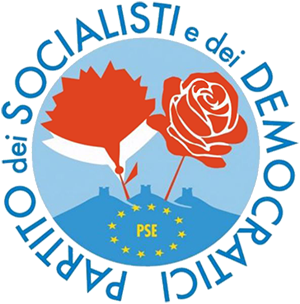
San Marino, officially the Republic of San Marino, also known as the Most Serene Republic of San Marino, is a small country in Southern Europe enclaved by Italy. Located on the northeastern side of the Apennine Mountains, San Marino covers a land area of just over 61 km2 (24 sq mi), and has a population of 33,562.
As the only surviving medieval microstate in the Italian peninsula, the history of San Marino is intertwined with the medieval, Renaissance and modern-day history of the Italian peninsula, according to tradition beginning with its foundation in 301 AD.

The politics of the state of San Marino take place in a framework of a unitary assembly-independent representative democratic republic, whereby the Captains Regent are the heads of state and heads of government. The country has a multi-party system. Executive power is exercised by the government. Legislative power is vested in both the government and the Grand and General Council. The judiciary is independent of the executive and the legislature.

The Sammarinese Christian Democratic Party is a Christian-democratic political party in San Marino.

The Sammarinese Socialist Party was a socialist and, later, social-democratic political party in San Marino. Its Italian counterpart was the Italian Socialist Party and its international affiliation was with the Socialist International.

The captains regent are the two heads of state of the Republic of San Marino. They are elected every six months by the Grand and General Council, the country's legislative body. Normally the Regents are chosen from opposing parties and they serve a six-month term. The investiture of the captains regent takes place on 1 April and 1 October every year. This tradition dates back at least to 1243.

The Sammarinese Communist Party was a Marxist political party in the small European republic of San Marino. It was founded in 1921 as a section of the Communist Party of Italy (PCI). The organization existed for its first two decades as an underground political organization.

Elections in San Marino gives information on election and election results in San Marino.

The Party of Socialists and Democrats is a social-democratic and democratic socialist political party in San Marino. It is a member of the Socialist International, and its current-day Italian counterpart is the Democratic Party.

The Grand and General Council is the parliament of San Marino. The council has 60 members elected for a five-year term.
Snap general elections were held in San Marino on 9 November 2008. They were called after the collapse of the centre-left government which had won the previous 2006 elections.

Arengo and Freedom was a liberal and social liberal political party in San Marino.

General elections were held in San Marino on 19 June 1909 to elect the second term of the Grand and General Council.

General elections were held in San Marino on 23 June 1912 to elect the third term of the Grand and General Council.

General elections were held in San Marino on 13 June 1915 to elect the fourth term of the Grand and General Council.

General elections were held in San Marino on 9 June 1918 to elect the fifth term of the Grand and General Council.

General elections were held in San Marino on 14 November 1920 to elect the sixth term of the Grand and General Council. It was the country's first snap election, and the first election to use a form of proportional representation. The result was a victory for the Sammarinese People's Party, which won 29 of the 60 seats.

General elections were held in San Marino on 4 March 1923 to elect the seventh term of the Grand and General Council. It was a snap election that marked the beginning of fascist rule in the republic. Left-wing parties were prevented from participating, while all centre-right forces ran as a single "Patriotic Bloc". Of the 60 seats, 29 were taken by the Sammarinese Fascist Party, 20 by the Sammarinese People's Party, 9 by the Sammarinese Democratic Union and two by the Fascist-puppets Volunteers of War. Later the country was taken over by the Fascist Party.

The 1906 San Marino citizenry meeting was a session of the Arengo in San Marino. It was the first such meeting in three centuries. It ended oligarchic rule and resulted in the first modern democratic elections in the country.
This page is based on this
Wikipedia article Text is available under the
CC BY-SA 4.0 license; additional terms may apply.
Images, videos and audio are available under their respective licenses.





